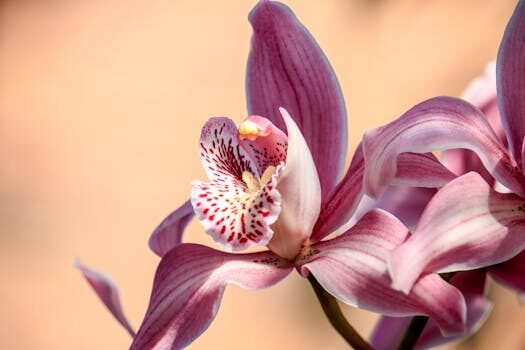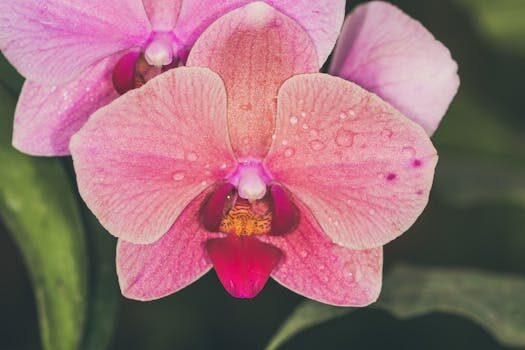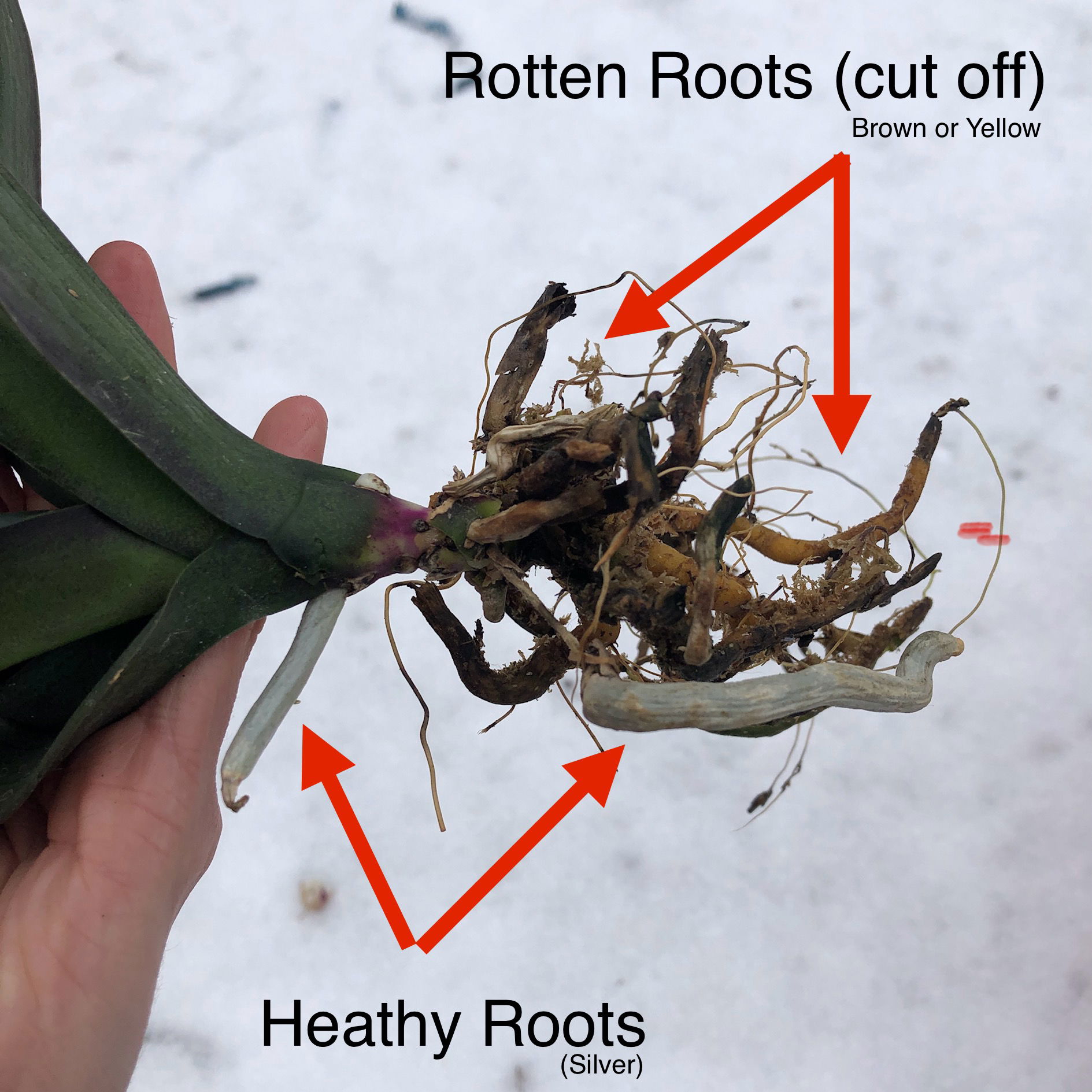Orchids are a beloved addition to any plant collection, known for their exotic beauty and diverse species. Nonetheless, even the most seasoned orchid enthusiasts occasionally face the challenge of root rot, a condition that can seriously impair the health of these delicate plants. Understanding the causes and solutions for this issue is crucial for any orchid caretaker.
How to recover from orchid root rot and save your plant
When faced with the distressing sight of an orchid suffering from root rot, the key is to act swiftly. Root rot can be reversed if detected early and treated effectively. It’s essential to remove the plant from its container and carefully inspect the roots, trimming away any that are brown, mushy, or otherwise unhealthy. After pruning, re-pot the orchid in fresh, well-draining media and adjust your watering routine to prevent future outbreaks.
The recovery process demands patience and care. It’s recommended to place the orchid in indirect light and monitor its water intake closely. Over the course of several days to weeks, you should see signs of improvement as your orchid begins to stabilize and eventually flourish once more.
Do not fertilize the plant immediately after treatment. Fertilizer can be reintroduced once the orchid shows signs of new growth, as this indicates recovery. During this period, also ensure that the plant is receiving adequate ventilation to promote healthy root development.
How do you fix root rot on orchids?
Fixing root rot in orchids involves a series of careful steps. Begin by isolating the affected plant to prevent the spread of any potential pathogens. Remove the orchid from its pot and gently clean the roots under running water. Using sterilized scissors, cut away any rotting or dead roots. Treat the remaining healthy roots with a fungicide or a solution like hydrogen peroxide to eliminate any lingering infection.
After treating the roots, choose an appropriate potting mix—typically a combination of bark and sphagnum moss works well for orchids. Repot the plant, taking care not to damage any new or fragile roots. It’s crucial to use a pot with adequate drainage to prevent water from accumulating at the bottom.
Finally, reassess your orchid’s environment. Ensure that it is positioned in a place with proper air circulation and appropriate light levels. This will help the orchid to recover and reduce the risk of future root rot occurrences.
What are the symptoms of orchid root rot?
Recognizing the symptoms of root rot in orchids is essential for providing timely care. The most glaring signs include roots that are brown or black in color, feel mushy when touched, and may emit an unpleasant odor. In some cases, the leaves of the orchid will turn yellow or appear wilted, indicating that the root system is no longer effectively transporting nutrients and moisture.

If the plant’s potting medium is consistently damp, this can be another indicator of overwatering and potential root rot. It’s important to check for proper drainage in the pot and to adjust your watering schedule accordingly.
Visible mold or fungus on the roots or in the potting media can also signal root rot. These pathogens thrive in excessively moist conditions and can quickly lead to root decay.
What causes orchid root rot and how do you solve it?
Overwatering is the primary cause of orchid root rot. Orchids require a delicate balance of moisture, as their roots need access to air as well as water. Waterlogged roots are deprived of oxygen and become susceptible to fungal infections that can lead to rot.
To solve root rot, it’s imperative to correct any overwatering practices. Only water your orchid when the top inch of the potting medium is dry. Use pots with proper drainage holes and avoid allowing the plant to sit in standing water. If root rot has already set in, follow the steps outlined previously to treat the plant and prevent a recurrence.
Other contributing factors to root rot include poor air circulation and contaminated potting media or tools. Always sterilize cutting tools before use, and ensure that your orchid is placed in an area with gentle airflow to encourage healthy root function.
How to prevent orchid root rot?
Prevention is always better than cure, especially when it comes to orchid root rot. To prevent this condition, start with a well-draining potting mix and a pot with adequate drainage holes. Monitor the plant’s moisture levels carefully, watering only as necessary.
Additionally, providing a stable environment with good air circulation and the right amount of light will keep your orchid healthy. Be cautious not to place your orchid in direct sunlight, as this can lead to overheating and excessive evaporation of moisture, which can stress the plant and its roots.

It’s also a good practice to regularly inspect your orchid’s roots for any signs of distress. Catching problems early is key to preventing full-blown root rot.
 Why is my orchid dying? The experts explain what not to do when caring for these exotic plants
Why is my orchid dying? The experts explain what not to do when caring for these exotic plantsWhat is the best treatment for orchid root rot?
Upon discovering signs of root rot, the best treatment starts with removing affected roots and treating the healthy ones with a fungicide. This helps to stop the spread of the disease and encourages the growth of new, healthy roots. Some orchid enthusiasts also recommend using natural remedies like cinnamon or hydrogen peroxide as a fungicide alternative.
After treating the roots, repotting in fresh medium and ensuring that the orchid has the right growing conditions are crucial steps. With consistent care and attention, orchids can recover from root rot and thrive once more.
How to identify healthy orchid roots?
Healthy orchid roots are firm to the touch, with a light green or silvery appearance. When watered, they should change to a darker green color, which indicates proper hydration. Good roots also exhibit active growth, with bright green tips signaling new development.
Regularly checking the roots can help you gauge the overall health of your orchid and take preemptive action if any issues arise. A stable root system is the foundation of a thriving orchid.
What is the role of cinnamon in orchid care?
Cinnamon is often lauded for its antifungal properties, which can be beneficial in orchid care. When applied to freshly cut roots or stems, cinnamon can act as a natural fungicide, helping to prevent infection and promote healing. It can also be used as a deterrent for pests that might be attracted to open wounds on the plant.
However, it’s important to use cinnamon sparingly, as too much can be harmful to the plant. A light dusting on cut areas is typically sufficient for its protective benefits.

Preguntas relacionadas sobre la pudrición de raíces en orquídeas
How do you fix root rot on orchids?
To fix root rot, remove the orchid from its pot and trim away any affected roots. Soak the healthy roots in a fungicide solution, then repot the orchid in a clean pot with fresh, well-draining media. Ensure proper care going forward, with correct watering and environmental conditions.
Root rot treatment can take time, and the plant may not show immediate improvement. Be patient and maintain a proper care routine to give your orchid the best chance at recovery.
What does cinnamon do for orchids?
Cinnamon can be used as a natural fungicide in orchid care. When applied to cuts on roots or stems, it helps to prevent fungal infections. Its antifungal properties make it an excellent choice for organic gardening enthusiasts looking to treat their plants without harsh chemicals.
While cinnamon offers benefits, it should be used judiciously to avoid harm to the plant. A light dusting on the necessary areas is usually sufficient.
What do overwatered orchid roots look like?
Overwatered orchid roots typically appear brown or black and have a mushy texture. They may also have an unpleasant odor. These symptoms indicate that the roots have begun to rot and are no longer functioning properly.
Immediate intervention is necessary to save the orchid from further damage. This includes cutting away the rotten roots and changing the plant’s living conditions to prevent future overwatering.
Is hydrogen peroxide safe for orchids?
Hydrogen peroxide is safe for orchids when used correctly. It acts as an oxygenator and can help to kill bacteria and fungi. When diluted appropriately, it can be used to treat the water or clean the roots during repotting.

However, it’s important to use a 3% solution or weaker and to apply it carefully to avoid damaging the plant. Always follow the recommended guidelines for dilution and application.
For further insights on treating orchid root rot, you can check out this informative video:
 Should you propagate string of pearls in soil or water? Expert advice
Should you propagate string of pearls in soil or water? Expert adviceOrchid care is a rewarding endeavor that requires attention to detail and a willingness to learn. By understanding the causes, symptoms, and treatments for root rot, you can ensure your orchids remain a vibrant part of your plant collection for years to come.

